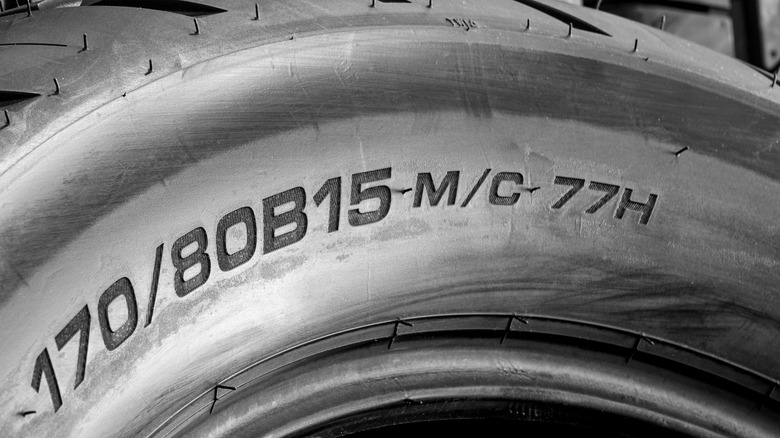Your Motorcycle's Dirt Tires Probably Aren't Street Legal – Here's How You Can Tell
Whether you're enjoying the weekend with friends, or just breaking in a new Yamaha 125 dirt bike on your own, riding can be a fun way to unwind. Before you hit the road, you might want to check for the Department of Transportation (DOT) marking on the sidewalls of your tires. Without it, your tires just aren't safe for public roads, no matter how well they perform on a dirt track.
The reason for the DOT stamp has to do with the tire's tread pattern. Motorcycle tires and dirt bike tires are regulated because you need more stability and traction on asphalt and gravel than you do anywhere else. In contrast, off-road tires are built to handle a variety of rougher terrains, including thick mud. Naturally, these tires will look much different than the ones stamped "DOT." If you're shopping for tires and spot some that are advertised as road-worthy, but don't have the DOT label, you should stay away, as those tires may be counterfeit.
If you decide to risk using tires that aren't DOT-approved, it's important to remember that bulkier off-road motorcycle tires could easily grab the attention of any cops who happen to be watching. So if your tires look like they were made for the trail instead of the highway, you could be more likely to get pulled over. Without the right tires, you might be going home with an expensive ticket.
Making sense of the DOT code and tire specs
When checking the DOT stamp on your motorcycle tires, you'll see a series of letters and numbers that follow it. This code contains valuable information that you should know: It begins with the plant code, which tracks the location and maker. Immediately after that number is the tiremaker's internal ID code, followed by the actual date the tire was manufactured. For example, "3525" means the tire was made in the 35th week of 2025.
Beyond the DOT code is even more information, including the tire's size and specifications. For the size, the width comes first in the sequence, followed by the tire's aspect ratio of the sidewall, height to width. Then there's the construction type, and the rim diameter. At the end, you'll see the tire's weight capacity, and finally, the speed rating. If you have any questions about the DOT codes or specs, visit the manufacturer's website, or contact your local dealer, who should be able to help.
It's important to stay updated on how the code works, as there have been changes in the past. For example, the date code was once written as a three-number series, with the first two numbers representing the week of manufacture, and the final number representing the year. But after the year 2000, the code was expanded to four digits, with the final two numbers representing the year.

